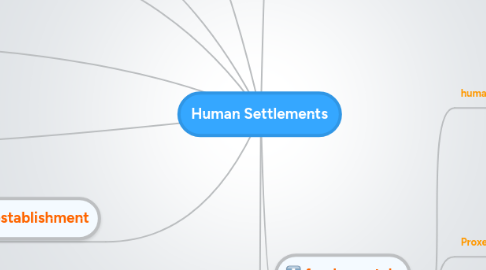
1. Anthropocosmos
2. elements
2.1. Nature
2.1.1. New node
2.2. Human
2.3. Society
2.4. Shells
2.5. Networks
3. meaning
3.1. location
3.1.1. residence
3.1.2. environment
3.1.2.1. rural
3.1.2.2. urban
3.1.3. territoriality
3.2. totality of human community
4. components
4.1. Human
4.1.1. New node
4.2. Time
5. discipline
5.1. EKISTICS
6. growth and transformation
6.1. comparison and contrast
6.1.1. Natural organism
6.1.2. Energy flow (food web)
6.2. level
6.2.1. Bio tropic
6.2.1.1. Producer
6.2.1.2. Consumer
6.2.1.2.1. Herbivore
6.2.1.2.2. Carnivore
6.2.1.2.3. Omnivore
6.2.2. Urban tropic
6.2.2.1. Extraction community
6.2.2.2. Processing community
6.2.2.3. Manufacturing community
6.2.2.4. City/primary urban centers
6.3. Ecological Processes
6.3.1. Concentration and Centralization
6.3.2. Decentralization or Dispersion
6.3.3. Segregation
6.3.4. Invasion
6.3.5. Succession
6.4. Principles
6.4.1. of Maximization of Potential Contacts
6.4.2. of Miniminzation of Efforts
6.4.3. Optimization of Protective Space
6.4.4. Optimum Quality of Environment
7. establishment
7.1. Religious
7.2. Socio cultural
7.3. Political/military
7.4. Economic
8. classification
8.1. size
8.1.1. Population of People living
8.1.2. Extent of Space
8.2. categories
8.2.1. settlements layout
8.2.1.1. Nucleated/ Clustered
8.2.1.2. Dispersed
8.2.1.3. Linear
8.2.2. permanency
8.2.2.1. Temporary
8.2.2.2. Semi permanent
8.2.2.3. Permanent
8.2.3. building
8.2.3.1. Natural
8.2.3.2. Planned
8.2.4. function and purpose
8.2.4.1. Rural
8.2.4.2. Urban
8.2.4.3. Insitution
9. fundamentals
9.1. human needs and satisfaction
9.1.1. Ekistic goals
9.1.1.1. Primary (Aristotle)
9.1.1.2. Secondary
9.1.1.3. Tertiary
9.1.2. Human needs
9.1.2.1. Self actualization
9.1.2.2. Esteem needs
9.1.2.3. Social needs
9.1.2.4. Safety needs
9.1.2.5. Physiological needs
9.2. Proxemics
9.2.1. Edward T. Hall
9.3. Territoriality
9.3.1. Hyas aranevs, John Calhaun, John J. Christian
9.4. Stress
9.4.1. overcrowding
9.5. Space Bubbles
9.5.1. Intimate zone
9.5.2. Personal zone
9.5.3. Social zone
9.5.4. Public zone
9.6. Place
9.6.1. Location, Direction, Distance
9.6.1.1. absolute, relative
9.6.1.2. (location) Name, Site, Situtaion
9.6.2. Size and Scale
9.6.3. Physical and Cultural Attributes
